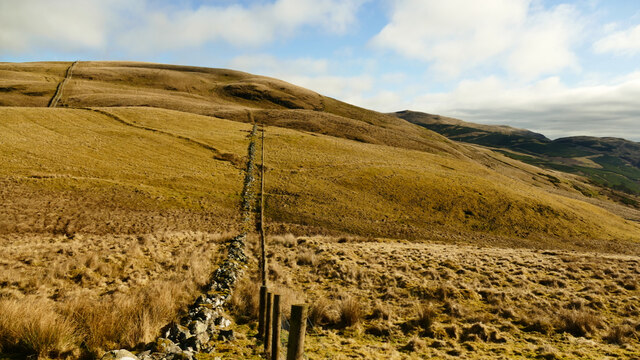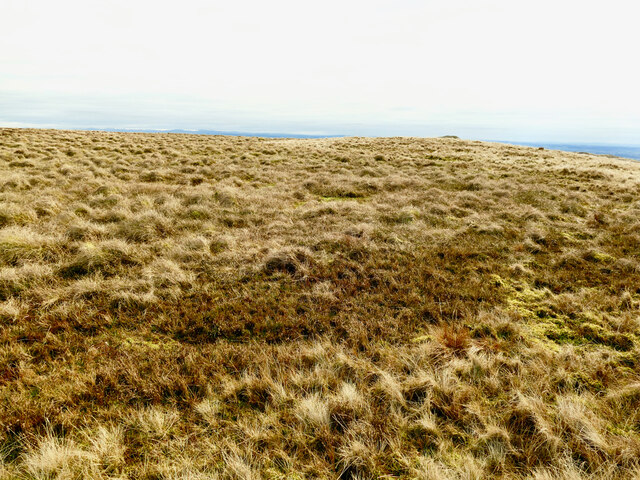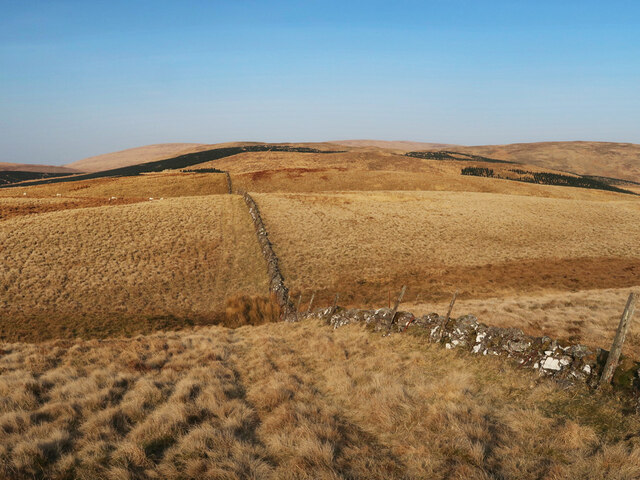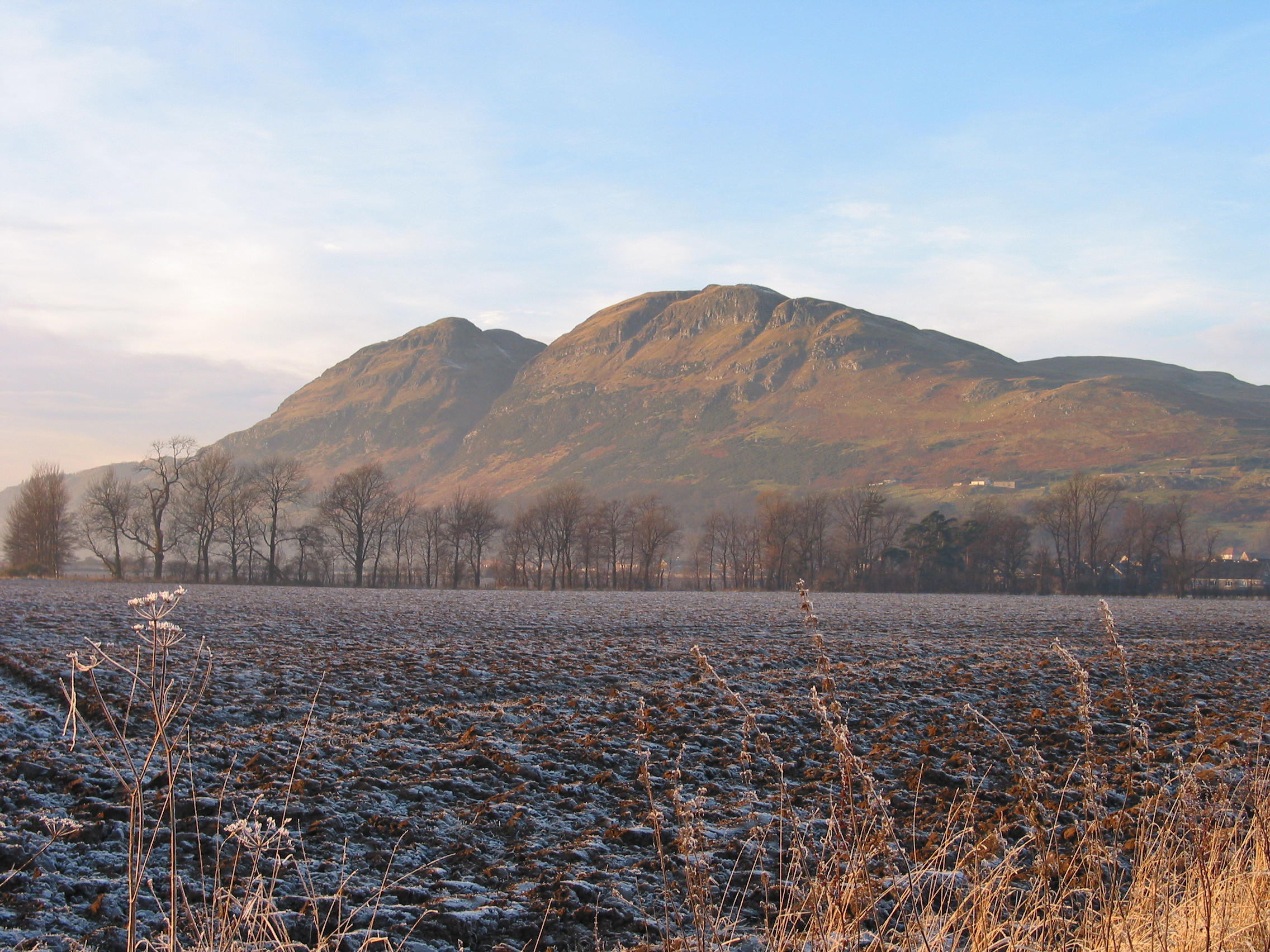Little Hunt Hill
Hill, Mountain in Perthshire
Scotland
Little Hunt Hill

Little Hunt Hill is a prominent and picturesque mountain located in Perthshire, Scotland. It is situated within the stunning landscape of the Scottish Highlands, offering breathtaking views and a diverse range of natural features. Standing at an impressive height of approximately 700 meters (2,297 feet), Little Hunt Hill is a popular destination for hikers, mountaineers, and nature enthusiasts.
The mountain is characterized by its rugged terrain, covered with heather and grasses, creating a vibrant and colorful landscape. Its slopes are dotted with scattered rocks and boulders, adding to its wild and untamed allure. The summit of Little Hunt Hill provides an exceptional panoramic view of the surrounding area, including the nearby mountains and the vast expanse of the Scottish countryside.
Little Hunt Hill is also known for its rich biodiversity, with various species of flora and fauna inhabiting its slopes. The mountain is home to a diverse range of plant life, including heather, mosses, and wildflowers. It is also a habitat for several bird species, such as golden eagles and peregrine falcons, as well as smaller mammals like deer and rabbits.
The mountain offers a range of hiking trails, catering to different levels of difficulty and experience. These trails provide opportunities for outdoor enthusiasts to explore the natural beauty of the area while enjoying the challenges of ascending the mountain's slopes. Little Hunt Hill is a place of natural beauty and tranquility, offering visitors a chance to immerse themselves in the awe-inspiring landscape of Scotland's Perthshire region.
If you have any feedback on the listing, please let us know in the comments section below.
Little Hunt Hill Images
Images are sourced within 2km of 56.191792/-3.8681365 or Grid Reference NN8401. Thanks to Geograph Open Source API. All images are credited.





Little Hunt Hill is located at Grid Ref: NN8401 (Lat: 56.191792, Lng: -3.8681365)
Unitary Authority: Stirling
Police Authority: Forth Valley
What 3 Words
///rather.smudges.dummy. Near Menstrie, Clackmannanshire
Nearby Locations
Related Wikis
Battle of Sheriffmuir
The Battle of Sheriffmuir (Scottish Gaelic: Blàr Sliabh an t-Siorraim, [pl̪ˠaɾ ˈʃʎiəv əɲ ˈtʲʰirˠəm]) was an engagement in 1715 at the height of the Jacobite...
Myreton Hill
Myreton Hill is a peak near the village of Menstrie in the Ochil Hills of Scotland. == Location == The hill is located immediately to the north-east of...
Menstrie Glen
Menstrie Glen is the glen which separates Dumyat from Myreton Hill and the main body of the Ochil Hills in Scotland. Once farmed but no longer inhabited...
Dumyat
Dumyat or Dunmyat (Scottish Gaelic: Dùn Mhèad) is a hill at the western extremity of the Ochil Hills in central Scotland. The name is thought to originate...
Broomhall Castle
Broomhall Castle is a mansion house originally called Broom Hall and was built in 1874 by John Foukes and Frances Mackison for James Johnstone. It is situated...
Menstrie
Menstrie (Scottish Gaelic: Meanstraidh) is a village in the county of Clackmannanshire in Scotland. It is about five miles (eight kilometres) east-northeast...
Menstrie Castle
Menstrie Castle is a three-storey manor house in the town of Menstrie, Clackmannanshire, near Stirling, central Scotland. From the early 17th century,...
Menstrie and Glenochil railway station
Menstrie and Glenochil railway station served the village of Menstrie, Clackmannanshire, Scotland, from 1863 to 1954 on the Alva Railway. == History... ==
Nearby Amenities
Located within 500m of 56.191792,-3.8681365Have you been to Little Hunt Hill?
Leave your review of Little Hunt Hill below (or comments, questions and feedback).


















